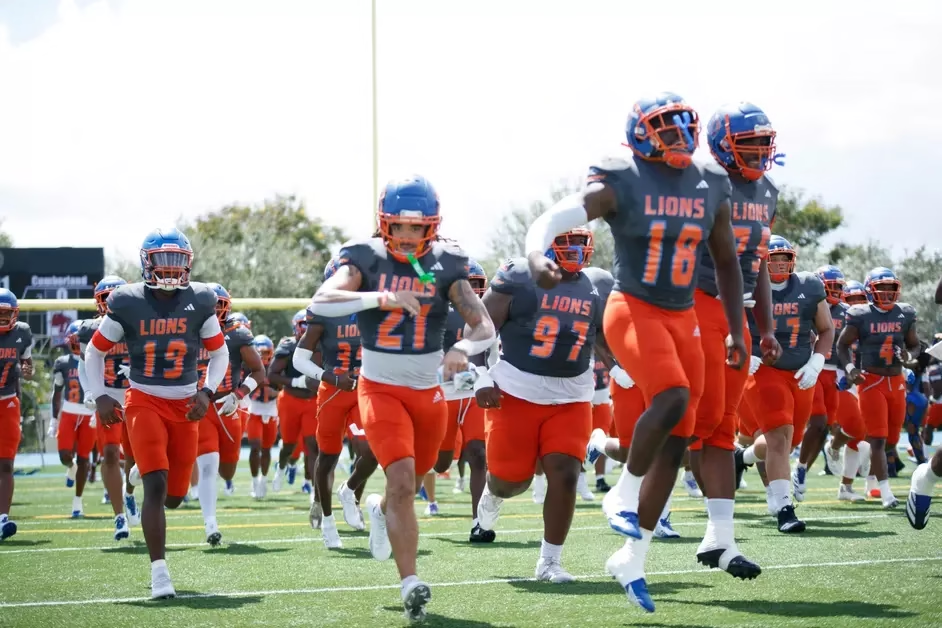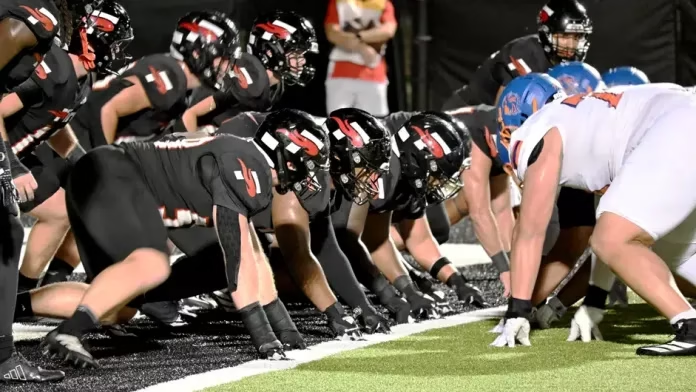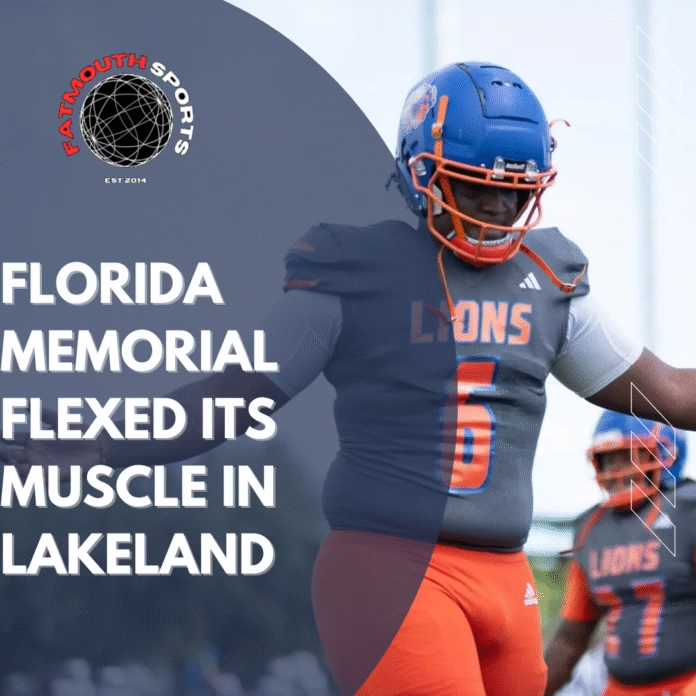On October 4, 2025, Florida Memorial flexed its muscle in Lakeland, Fla., and delivered a statement win — 28–23 — over #10 Southeastern (Fla.), a juggernaut in NAIA circles. What looked like a tightly contested tilt turned into a showcase of gutsy quarterback play, explosive throws, and a missed chance for utter domination. If you’re an HBCU football fan (and if you’re reading this on FatmouthSports, you probably are), this one felt good.
QB Play That Carried the Day
When you want to beat a top-10 team, you need your quarterback to settle down, own the moment, and make plays happen. Enter Tyquan Wiggan, who went 15-of-27 for 296 yards, 1 TD, and an interception. That’s nearly 300 yards through the air — not bad at all against a disciplined Southeastern defense. (Southeastern’s QB, Nate Mikell, had 16-of-31 for 142 yards with 1 INT.

Wiggan showed poise, stretching the field vertically and connecting on a huge 50-yard touchdown to Jerrodd Sims in the third quarter to flip the momentum. That bomb wasn’t a fluke. It was calculated, confident, and exactly what FMU needed to assert itself.
There was one blemish — the pick — but overall, he showed more composure and aggression than you’re entitled to expect from a team looking to upset. That kind of quarterback effort was the backbone of this win.
Big Plays in the Passing Game (and Why That Matters)
When you’re the underdog, you need explosive plays to tilt field position, flip defenses on their heels, and keep your run game honest. Florida Memorial delivered in spades.
- Jerrodd Sims, who also contributed on the ground, was the target for that 50-yard scoring strike. That play didn’t just get points — it shifted belief.
- Jalen Holly also made waves: 6 catches for 111 yards, averaging over 18 yards per catch. That kind of stretch receiver work opens the field in ways that let the ground game breathe.
- Cedric Madry (39 yards), Godson Sinlien (29 yards), and others chipped in, keeping Southeastern’s secondary honest.
Those plays did more than just rack up stats — they forced Southeastern to respect the deep ball, which in turn opened things up for more manageable gains and kept the chains moving.
Why Florida Memorial Could’ve Dominated — But Didn’t (Red Zone Woes)
Here’s where the narrative gets frustrating: by all indications, FMU was in control more often than not. FMU outgained Southeastern 387 to 306 in total offense. They had 23 first downs to Southeastern’s 20. They moved effectively between the 20s and created chances. Yet the final margin was just five points.

So how do you go from “total control” to “nail-biter”? The red zone was the culprit.
- FMU’s drives that reached the red zone were not always capped with touchdowns; sometimes they settled for nothing or were forced off the field.
- With a defense savoring every stop, Southeastern kickers were able to connect (three field goals) to stay in striking distance.
- Southeastern, to their credit, squeezed out points when they had to — 36- and 46-yard field goals in the second half kept them within reach.
If FMU had flipped just a drive or two into TDs instead of stalling, you’re looking at a blowout, not a five-point win. That inefficiency in the red zone is something to clean up as the season rolls on.
Final Thoughts from the HBCU Faithful
This win is more than just a mark in the win column. It’s validation. It’s proof that Florida Memorial can flex against top-tier competition. It shows that when your quarterback is courageous, your receivers make plays, and your brain trust calls things right, the underdog can become the story.
But none of that means you stop getting better. The red zone issue, the occasional interception, the moments when Southeastern closed the margin — those are all teachable, correctable margins. If FMU can sharpen up, we’re not just talking about this as an upset; we’re talking about a real contender.
Let’s ride this energy. Let’s build on this. An HBCU just knocked off the #10 team in the land — and we’re just getting started.

